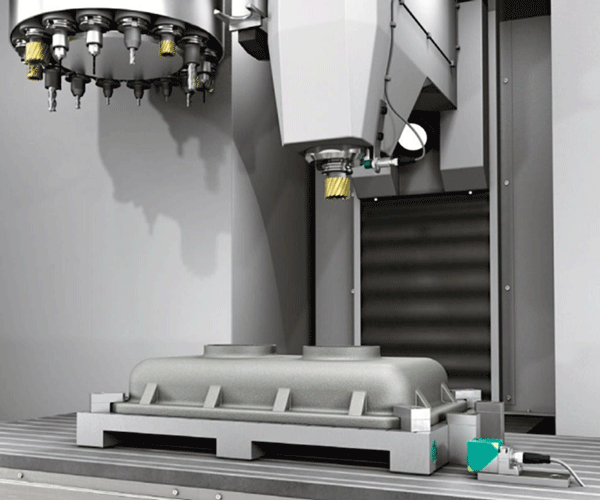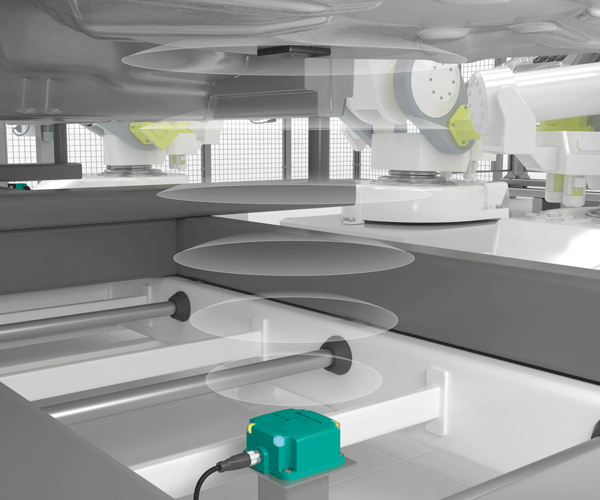LF, HF, UHF—How to Select the Ideal RFID Frequency Range for Your Application
Content of This Article
LF, HF, UHF—How to Select the Ideal RFID Frequency Range for Your Application
Whether in toll systems, as goods labels, in anti-theft systems, or for marking and tracking assets in production and logistics processes—noncontact RFID (radio frequency identification) technology is ubiquitous. Information is transferred via radio waves within the ISM band (industrial, scientific, and medical band), which ensures smooth data transmission and avoids interference with other radio systems. However, when small- and medium-sized companies are deciding on an RFID system for the first time, they are often occupied with one frequently recurring topic: How to select the most suitable RFID frequency range for their application.
Typically, passive RFID systems use either low frequency (LF), high frequency (HF), or ultra-high frequency (UHF). Based on a schematic overview, this blog article provides an initial guide to these frequency ranges and their characteristics.
Please note that the specified frequency ranges, possible read ranges, and standards refer specifically to the RFID systems from Pepperl+Fuchs and do not represent universal specifications.
LF RFID (Low-Frequency RFID)
Frequency range: 125 kHz
Possible read range: up to 10 cm
Standard: ISO/IEC 18000-2
Application area: Low-frequency RFID systems are suitable for reliable detection of tags at short distances. Despite their low data transfer rate compared to HF or UHF systems, LF RFID systems have become firmly established in certain applications due to their low susceptibility to surrounding materials. If, for example, objects with a high water content need to be equipped with RFID tags and recorded, LF RFID systems offer an excellent solution. The same applies to the marking of livestock with subcutaneously implanted RFID tags—here too, low frequency is the range of choice. LF systems are ideal for use in metallic environments, such as identifying workpieces and tools.
Example device: The IPH-L2-V1 RFID read/write device combines the advantages of LF RFID technology with the familiar VariKont L2 design from Pepperl+Fuchs. This makes the device ideal for detecting workpiece carriers in CNC machines. Due to its compact design and variable adjustment capability, this LF RFID read/write device can be easily integrated into machines, even where space is limited.

HF RFID (High-Frequency RFID)
Frequency range: 13.56 MHz
Possible read range: up to 30 cm
Standard: ISO 15693
Application area: High-frequency RFID systems operate at medium-to-high data transfer rates and are therefore ideal for transferring large volumes of data at high speed. HF systems are especially good for guided applications where the tags pass through the read/write devices in a constant position and orientation. The systems are relatively insensitive to humidity and water, but do not offer the same resistance in metallic environments that LF systems offer.
Example device: The IQH3-FP-V1 and IQT3-FP-IO-V1 HF RFID read/write devices have a read range of up to 30 cm (adjustable), which is unique within this class on the market. This gives users maximum flexibility and freedom in adapting the devices to the respective application. In addition, they are among the few HF RFID read/write devices in this class that also support multitag detection. Up to 20 HF RFID tags can be detected simultaneously in a single read operation, thereby achieving fast throughput times and optimized processes.

UHF RFID (Ultra-High-Frequency RFID)
Frequency range: 865 MHz to 928 MHz
Possible read range: up to 6 m
Standard: EPC Gen 2 (ISO/IEC 18000-63)
Application area: Due to their wavelength, ultra-high-frequency RFID systems are less suitable than the other two frequency ranges for use near metallic or liquid surfaces. However, if long distances need to be bridged or large volumes of identifier data need to be sent, UHF RFID is especially suitable due to its high read range, data transfer rate, and multitag capability. These capabilities are responsible, at least in part, for making the UHF range the fastest growing market within the RFID segment. The range of applications in which UHF RFID is used is correspondingly wide. This includes toll and parking systems, loan systems for public libraries, and a large number of production and logistics areas. Whether for monitoring incoming and outgoing goods, picking processes, tracking supply chains, or implementing vehicle guidance systems on the shop floor—UHF RFID is a potentially suitable technology.
Example device: The IUT-F191-IO-V1-FR* RFID read/write device combines the advantages of sophisticated industrial UHF technology with a standardized interface for IO-Link communication and can be used as a cost-efficient enabler component for a wide range of standard applications in areas such as intralogistics, automotive, and material handling. The F191 RFID read/write devices are commissioned without time-consuming programming via the future-oriented, integrated IO-Link interface.

Subscribe to our newsletter and receive regular news and interesting facts from the world of automation.
